Working a Steelhead
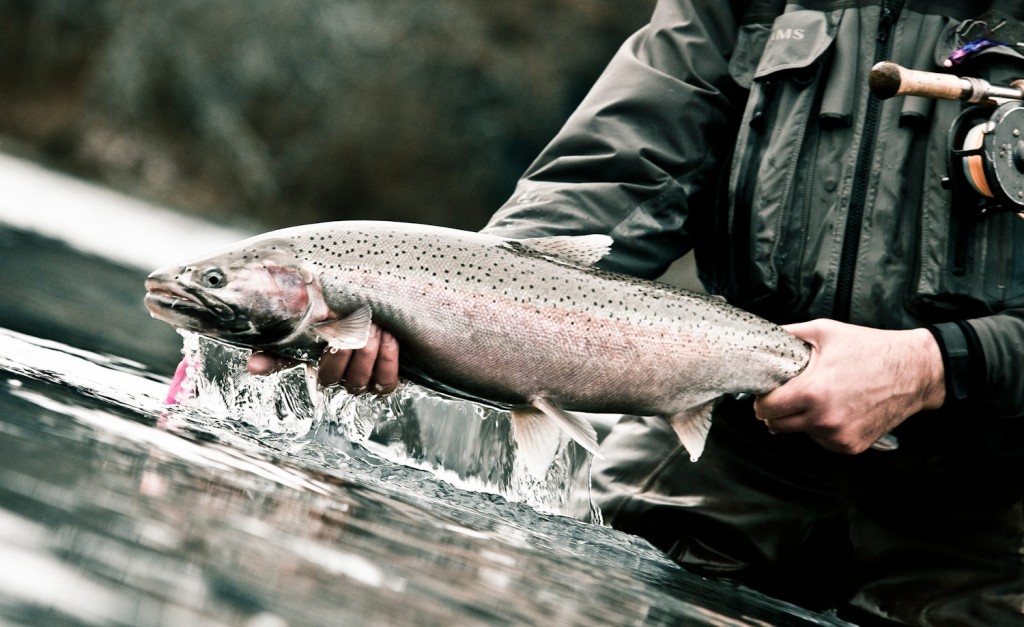
I had the opportunity to watch my friend Jeff Hickman work a shy Steelhead the other day and his effort was exemplary.
Swinging flies for winter steelhead is a game of numbers, very small numbers. It’s a given when chasing winter fish that there may be limited numbers of fish present in the river. Even fewer of them will be willing to eat a swung fly. You can not afford to miss putting your fly in front of every fish. These fish are on the move so you never know where they will be. You have to be methodical and know that it could happen at any time.
When you really think about it, the mathematics of the system are remarkable. For those not familiar, the idea is pretty simple. You cast across the current far enough to cover any possible holding water and swing the fly down and across until it hangs directly below you. Strip in your line, make the same cast with exactly the same amount of line, step down stream the length of a fish and repeat. Granted, this is a gross oversimplification of a very nuanced technique but that’s the general idea. If you take the time to draw a picture, using a drafting compass you will see that the concentric circles your swinging fly makes cover the water with amazing efficiency. It’s a bit like Tai Chi. You are always striving for perfection.
After hours, or days, covering water in this way it can be heartbreaking when you find a fish who’s interested but won’t commit. Often a single tug is the only evidence that you have found a player. I had the opportunity to watch my friend Jeff Hickman work just such a shy player the other day and his effort was exemplary. Here’s how it went down.
Jeff was fishing through a run and got a timid pull on a purple and black fly. He immediately changed flies rather than show the fish the fly he had rejected a second time. A good call in any type of fishing. He went to a pink fly. The water had some
Read More »Spring Bass Tactics for Southern Appalachian Lakes
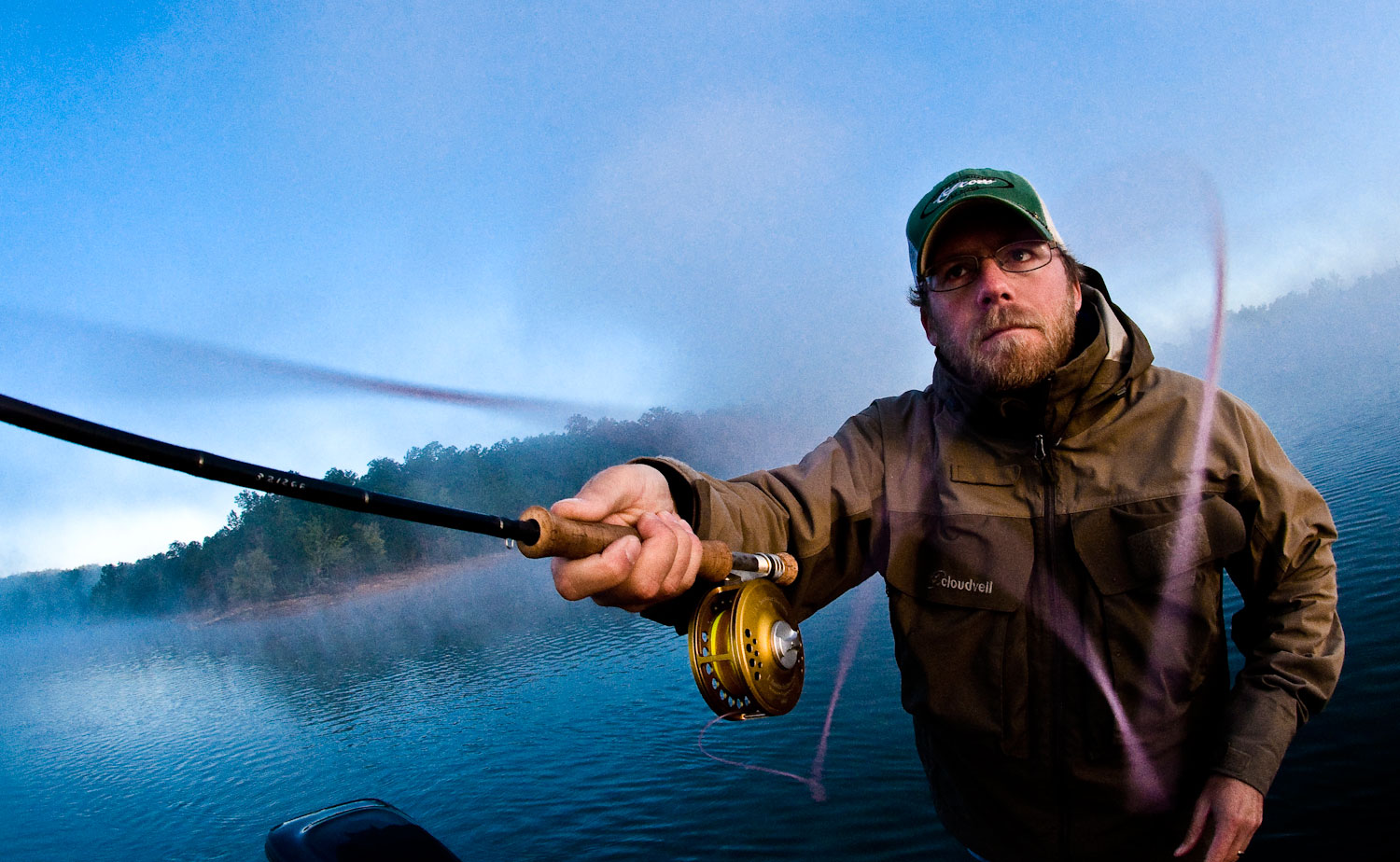
Spring Bass Fishing Tactics for fly anglers interested in Southern Appalachian reservoirs. There’s tons of lakes readily available for fly fisherman to catch bass throughout the Southern Appalachian region. Unfortunately, these lakes aren’t your two-acre farm pond in your backyard or subdivision that you grew up fishing as a kid—they’re multi-thousand acre reservoirs that can be extremely challenging to learn how to fly fish. Fly Fishing Reservoirs starts with fishing the correct areas. Fly fishing for bass on public reservoirs is much like trying to find a needle in a haystack. If you don’t have a general idea of where the needle is located, your chances of finding it are slim to none. To be successful fly fishing lakes, you’ll have to quickly be able to eliminate areas of the lake where the bass aren’t located and then narrow your focus to small areas of the lake that provide bass what they need. Bass need the following: suitable habitat, satisfactory food and comfortable water conditions (water temperature & water depth). All these change depending on the season. In our case, we’ll be focusing on what bass need during the spring. Just like in trout fishing, bass fishing is all about bypassing unproductive water and spending your time fishing the productive water. Eighty percent of the bass on the lakes will be found in 20 percent of the water. If you want to catch them, you’ll need to maximize your time fly fishing the correct water. A Quality map of the lake is critical Keep in mind, all maps aren’t created equal (and many are total crap). The map you want to buy needs to have enough detail on it that you can get a clear picture of what the lake looks like underwater and what types of cover it has. … Continue reading
Read More »Bob Stays Out Late
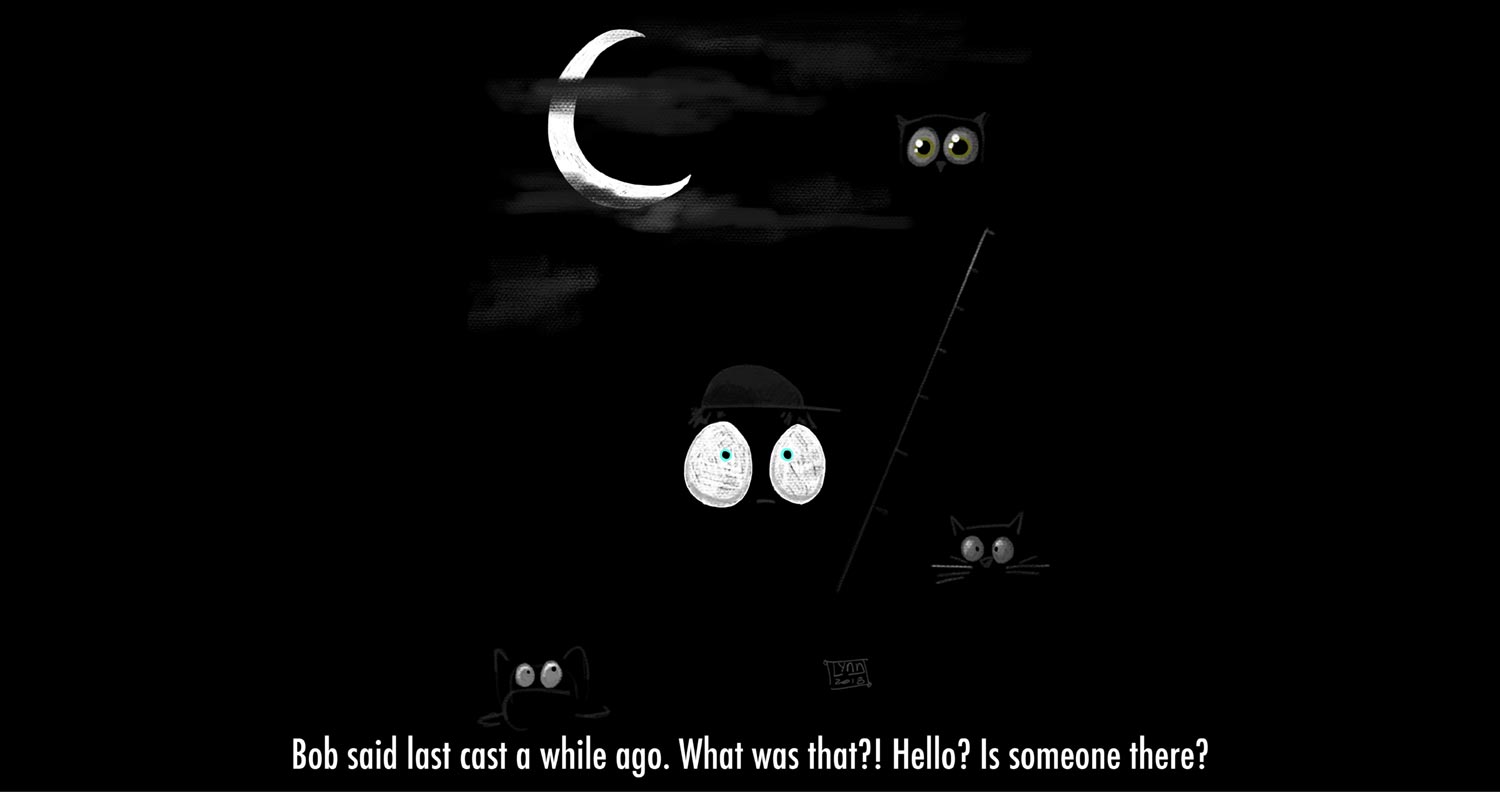
Bob isn’t a quitter, even when he should be. Maybe there will be a hex hatch…where’s my truck?
See more of Bob and the angling art of Andrea Larko on Etsy.
Read More »No-Tech Flats Boots
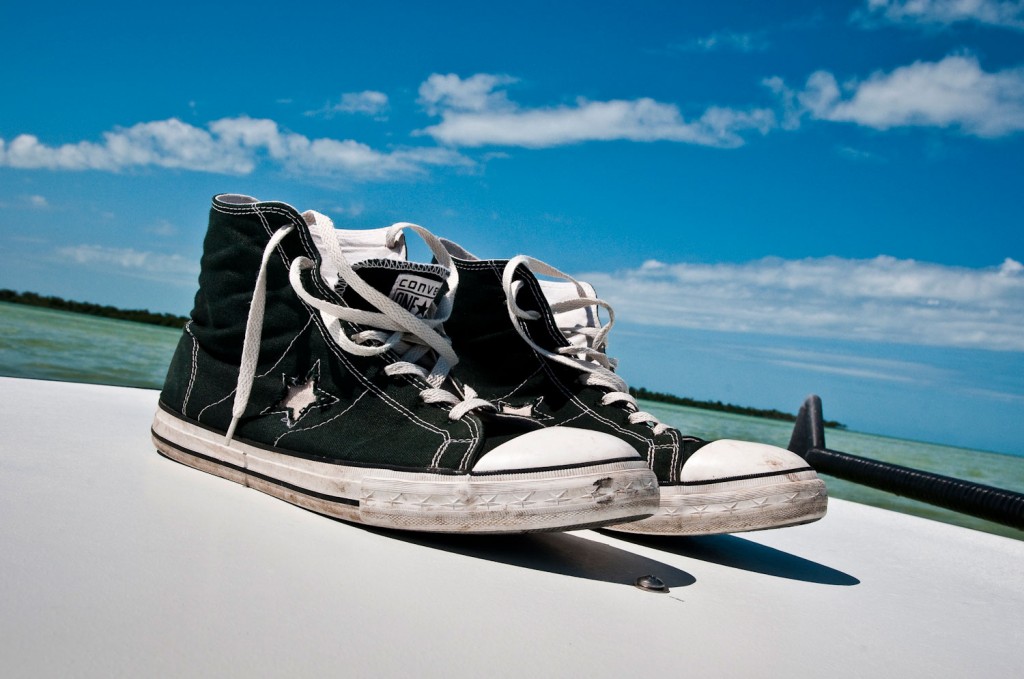
Want to do a little wading on the cheap?
A few years ago I was fishing in the Bahamas with my friend Kirk Deeter. We stopped to get out of the boat and wade to some tailing bonefish and Kirk pulls out a pair of Converse All Stars. We grew up calling them Chucks but Kirk calls them flats boots. I couldn’t help but see the brilliance of it. Kirk explained that he bought a pair of these cheap high tops when he was headed to the salt, wore them for the week, then pitched them. Not even flying home with dirty wet boots. Smart guy.
So the next time I headed to the keys I made a stop at Target where I discovered these. Converse One Stars. Important distinction, not all stars just one star. Like the one star motels I usually end up in. I bought them because they were cheap, and handy. Thirty five dollars at Target, but it turned out great. I actually like them better than the Chucks. Here’s why.
Following Kirk’s lead, I planned on throwing them away at the end of the week. Kirk had explained that the Chucks were only good for that long because the metal grommets rust from exposure to salt water. The cheap One Stars have no grommets, so no rust. They also don’t have
Read More »You went fishing where?
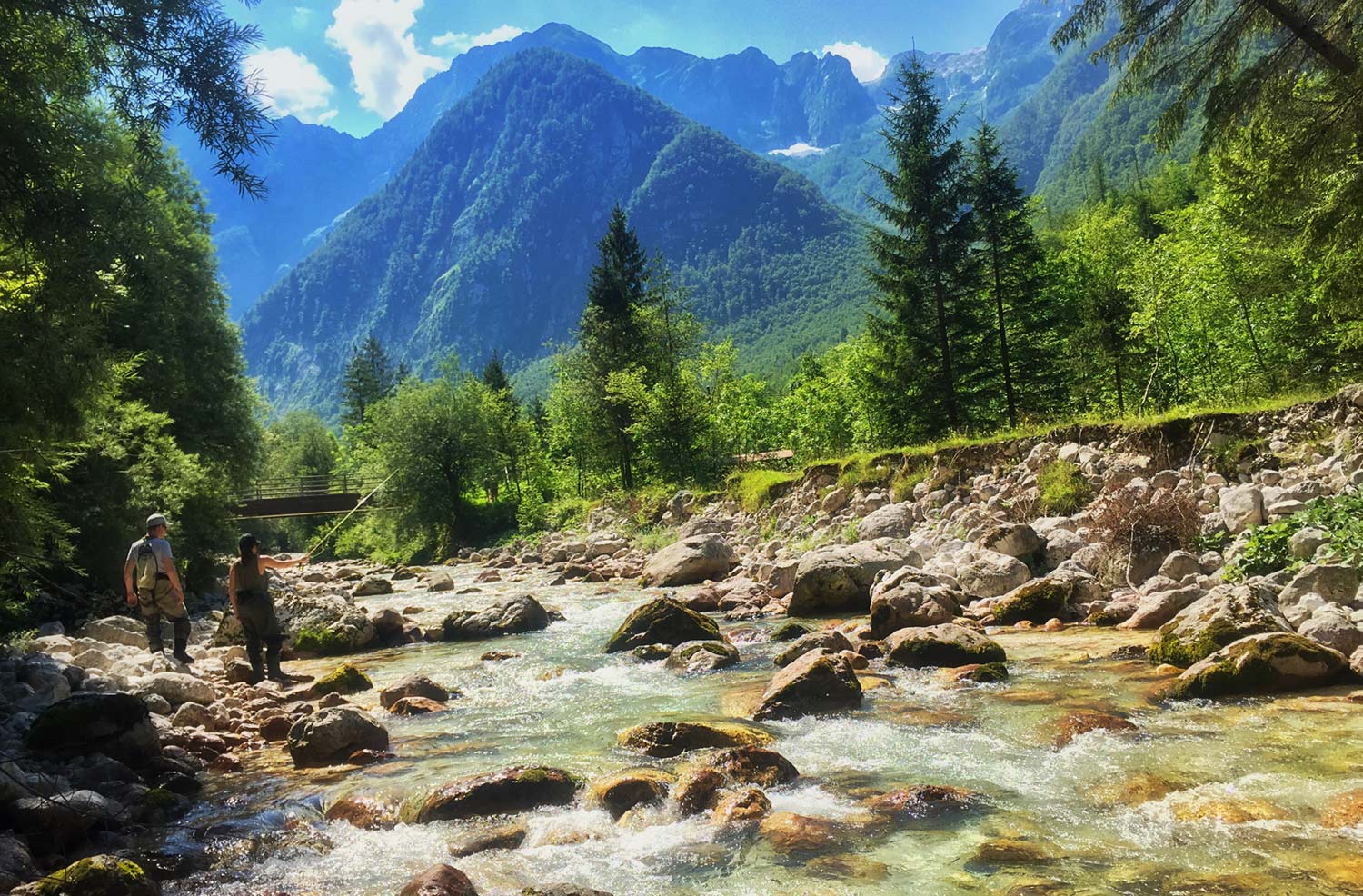
By Jesse Lowry
Slovenia! Who the hell goes fishing in Slovenia?
That’s the typical reaction I get when I start talking about my fishing trips to this little gem of a country that most people couldn’t point to on a map. I’ve been fortunate enough to visit Slovenia a handful of times and still am chomping at the bit to go back. It has a ton to offer anyone who makes the journey to this country of roughly 2 million people on the Adriatic Sea, at the cross roads of some very different cultures. Formerly part of the Yugoslavia (and numerous other empires prior) and now part of the EU, Slovenia has been influenced by Slavic, Germanic, and Italian roots. The people there are very proud, friendly and love the outdoors; hiking, rock climbing, white water kayaking, paragliding, and of course fly fishing. Many of the people I met would go fly fishing in the morning and then flying off the side of a mountain by noon once the thermals started to pick up, this worked to my advantage as the rivers were less busy in the afternoon, granted the fishing does slow down with the sun overhead and the gin clear rivers.
It truly is a spectacular place to visit, even if there were no fish in these rivers they are an absolute pleasure to wade through and hike along. Crystal clear turquoise waters, deep canyons, lush forests, gorgeous water falls, massive boulders sprawled throughout the river almost like they were placed there just for Fly Fishermen, old homesteads that have stood the test of time and blend seamlessly into the background, it’s like stepping back in time. Then add to all of this feisty Rainbows, Adriatic Grayling, Browns and the most sought after, Marble Trout (think bull trout head on a brown trout body, with feeding behaviour similar to browns). All these fish in sizes where you have to give your head a shake, given the water they are occupying. This is the total package, a sight fishing, upstream dry fly fishing mecca, accessible from your car, that seems like it was conjured from some of your fishiest dreams. Obviously, nymphing and streamers work great, but when sight fishing in gin clear water I find it hard to resist throwing a dry (probably to my detriment from a hook up perspective… hrrmmm I seemed to suffer from something similar during university days as well).
Fly selection wise I felt amply prepared with my usual western freestone go to’s, though some tail water selection would be a welcome addition. Dry Flys: Stimulators in Orange (lots of orange moths or Butterflys in July and August), Goddard Caddis, small tape wing black caddis, purple haze, green drakes, BWOs, ants and terrestrials. Nymphs: Hares ears, pheasant tails, stone flies, cased caddis, guides choice….you get the idea. I’m told streamers early hours in the dark in some of the big holding pools is the way to hook into the big meat eating Marbles, these pools are home to very tight lipped big fish during daylight hours, which people cast endlessly at and are mostly unsuccessfully. You’ll figure out which pools these are pretty quick, easy access to them, big fish stacked up, looks like shooting fish in a barrel, generally it ain’t.
In terms of finding the spots to fish, it’s pretty easy, a little Google Maps Satellite view and you’ll see most of the roads follow blue lines. Currently it seems the imaging was done in summer when flows are lower which allows you to identify pools and pocket waters quite easily. You will also notice there are lots of access points and turn outs along the road, mostly put ins and take outs for the kayakers and rafts, so bit of care needed when parking in these spots especially the raft access points. Note: satellite images make things look flat and seemingly easy to access, this definitely isn’t the case there are some very steep access points not ideal for the shaky legs, but they get you to some pretty stellar places. Also note all of my fishing in Slovenia has been done during Late June to Late August when flows are low and wading the river is relatively is easy.
Read More »Angler Attitude Can Increase Success During Tough Fishing Conditions
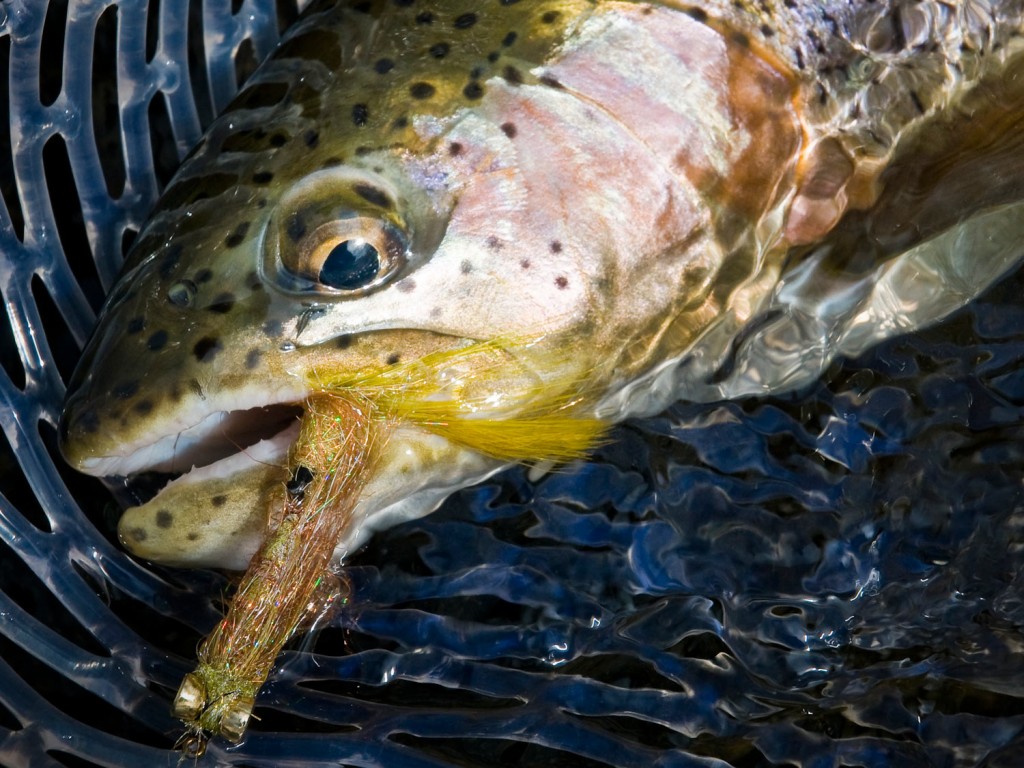
I’m grateful to have a full-time fishing partner that isn’t afraid to step it up when the going gets tough.
Louis Cahill is the epitome of this, he’s an angler that’s willing to do whatever’s necessary to put fish in the net, even when catching fish seems completely hopeless. In fact, he seems to shine when fishing conditions are really tough, and oddly as it may sound, sometimes I think he actually prefers bleak fishing conditions for the challenge and reward. It doesn’t matter if everyone on the river is getting their butts handed to them, Louis won’t except defeat until he’s given it everything he’s got. And here’s the real kicker, unlike many of us, I rarely have to pump Louis up for him to give me his absolute best on the water. All I have to do is get a serious look on my face, start cranking on the oars, and mention the words, “Let’s do this”. Nine times out of ten, he charges out the gates, like a horse at the Kentucky Derby, and ends up getting the job done by landing multiple big fish.
I think Louis has figured out how important angler attitude (staying positive, confident, grounded) is for catching fish, and many of us, including myself, need to take note. Louis openly acknowledges trout can be super technical and extremely difficult to catch at times, but he maintains a firm stance that trout don’t have a higher intelligence than us, and they can’t consciously pick and choose who they outsmart. This fishing attitude is why Louis can travel all over the world fly fishing uncharted waters and find success, and that’s why I eagerly follow his lead where ever he goes. The man always has a plan b, c, and d, if plan a fails to produce.
When fishing conditions are grim and we, as anglers, begin doubting our ability to catch fish, we often begin fishing below our skill level. Unaware, we begin straying away from our angler reasoning and fishng instincts, and in turn, we make bad fishing decisions on the water. We’ll find ourselves sticking with a dry dropper rig, because we’re seeing an occasional riser along the bank even though we’re getting no takes. We’ll continue fishing a specific fly pattern because it produced for us earlier in the day even though its been hours since we caught our last fish. Plain and simple, we stop thinking outside the box as anglers, and we
Read More »Get Slinky With Your Indicator
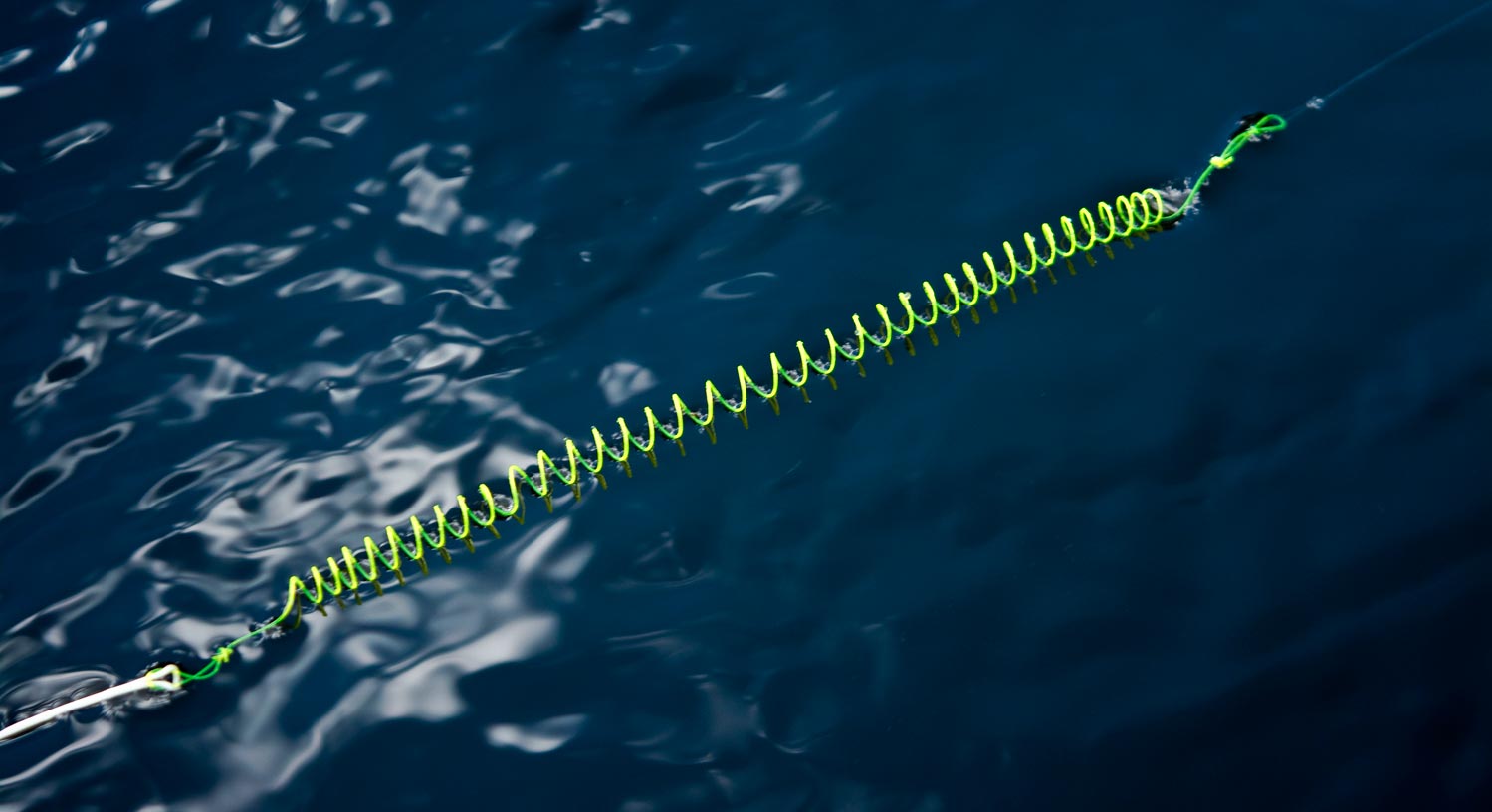
By Johnny Spillane
AS WE GET INTO FALL AND FISH ARE BECOMING MORE SELECTIVE AND EATING SMALLER BUGS LIKE TRICOS, FISHING CAN BECOME MORE CHALLENGING. USING A FRENCH SLINKY INDICATOR OR SLINKY INDICATOR CAN BE A GREAT WAY TO HOOK A FEW MORE FISH WHEN THEY ARE BEING ULTRA SELECTIVE OR ULTRA SPOOKY.
I like to use it when fish are in shallow water or they are suspended close to the surface in deep water but not feeding on the surface. Typically, I like to use some sort of dry dropper rig in this situation, but if the fish are being picky and ignoring the flies, it might be because of the larger dry fly used to support the nymphs. They have been seeing that stuff all summer.
Removing it can be a big help, but then you’re stuck with the problem of detecting the strike. A slinky indicator is perfect for that situation. It’s easy for fishermen to see, detects even the subtlest strikes and is very difficult for the fish to see. There is no splash when it hits the water so you can get it in fairly close to fish without spooking them and if you grease it with mucilin it actually floats really well and will support a moderately sized dropper. There are countless other ways to use this rig but this is where I have found it to be the most effective for me.
MAKING THE SLINKY INDICATOR
In order to build the indicator, you’ll need a few things. An empty Bic pen case or something similar, duct tape, 15lb high visibility monofilament and some boiling water.
Cut a two foot section of the mono and tape one end to the pen case leaving a 6- to 8-inch tag and then tightly wrap the mono around the pen 8-15 times depending on how long you want your slinky indicator to be.
Read More »Use Birds to Quickly Locate Bait and Schools of Fish
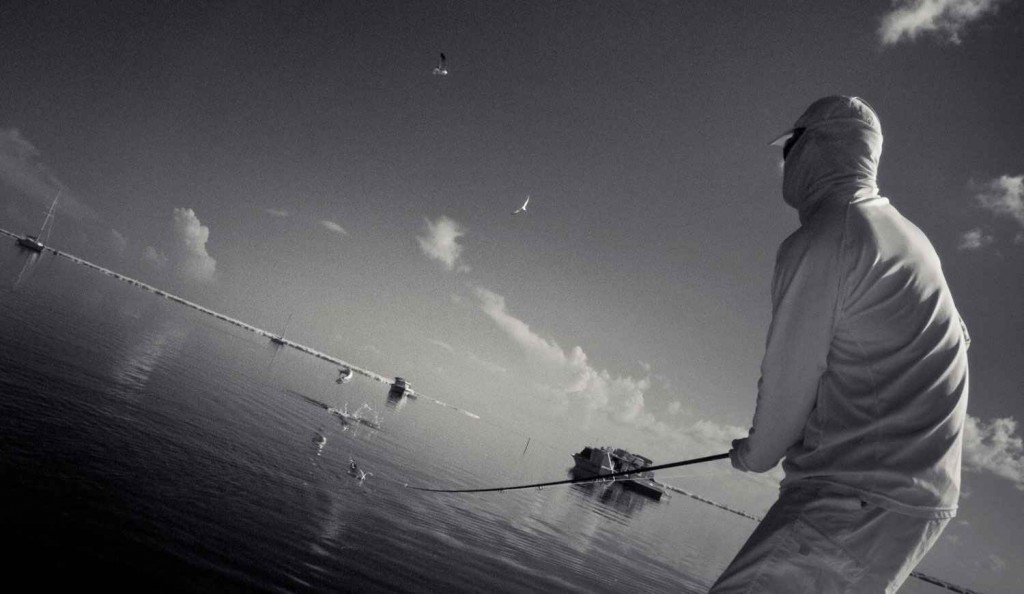
Certain times of the year in both freshwater and saltwater, anglers can use flocks of actively feeding birds to locate large concentrations of bait and fish.
This was the case during my recent fly fishing trip with Capt. Joel Dickey. First thing, early in the morning, we’d run a wide sweeping perimeter with the boat, as we searched for seagulls on the feed. Binoculars weren’t a necessity but they allowed us to be more efficient by eliminating large areas of water that would otherwise be too far off for the naked eye. Being patient, continuing to cover water, and keeping confidence were the key factors in us successfully locating feeding birds. Be prepared for it to take a little while some days. For us, each morning it took a little while to find the birds, but eventually things fell into place with each scouting attempt. As the sun begins to rise over the horizon, it creates a perfect contrast of light that turns seagulls a bright neon white. You’d be surprised how far off you can pick out feeding birds this time of day. Any birds you find on the water means there’s probably bait and fish near by, but when you find diving birds in good numbers, you know there’s a feeding frenzy in progress.
I’ve used birds many times in the past to locate schools of striped bass on my local reservoirs, but this saltwater trip was my first time using seagulls to locate tarpon. The seagulls and tarpon were feeding on a shrimp die off, that happens during the hottest times of the year in the evenings and at night. During these periods photosynthesis is not taking place, and with the lack of wind, oxygen levels in the water dropped below average. I have to say it was an adrenaline pumping way to fish for tarpon. We’d cruise in on plane and cut the engines at a safe distance, allowing us to coast in quietly to avoid alerting the feeding tarpon. Immediately following, Joel would jump on his platform and quickly pole us into the schools of rolling tarpon.
The key to getting bites was finding a rolling tarpon within casting range, and then firing a presentation quickly 3-5 feet in front of the tarpon. The hardest part for me
Read More »DRIFTING
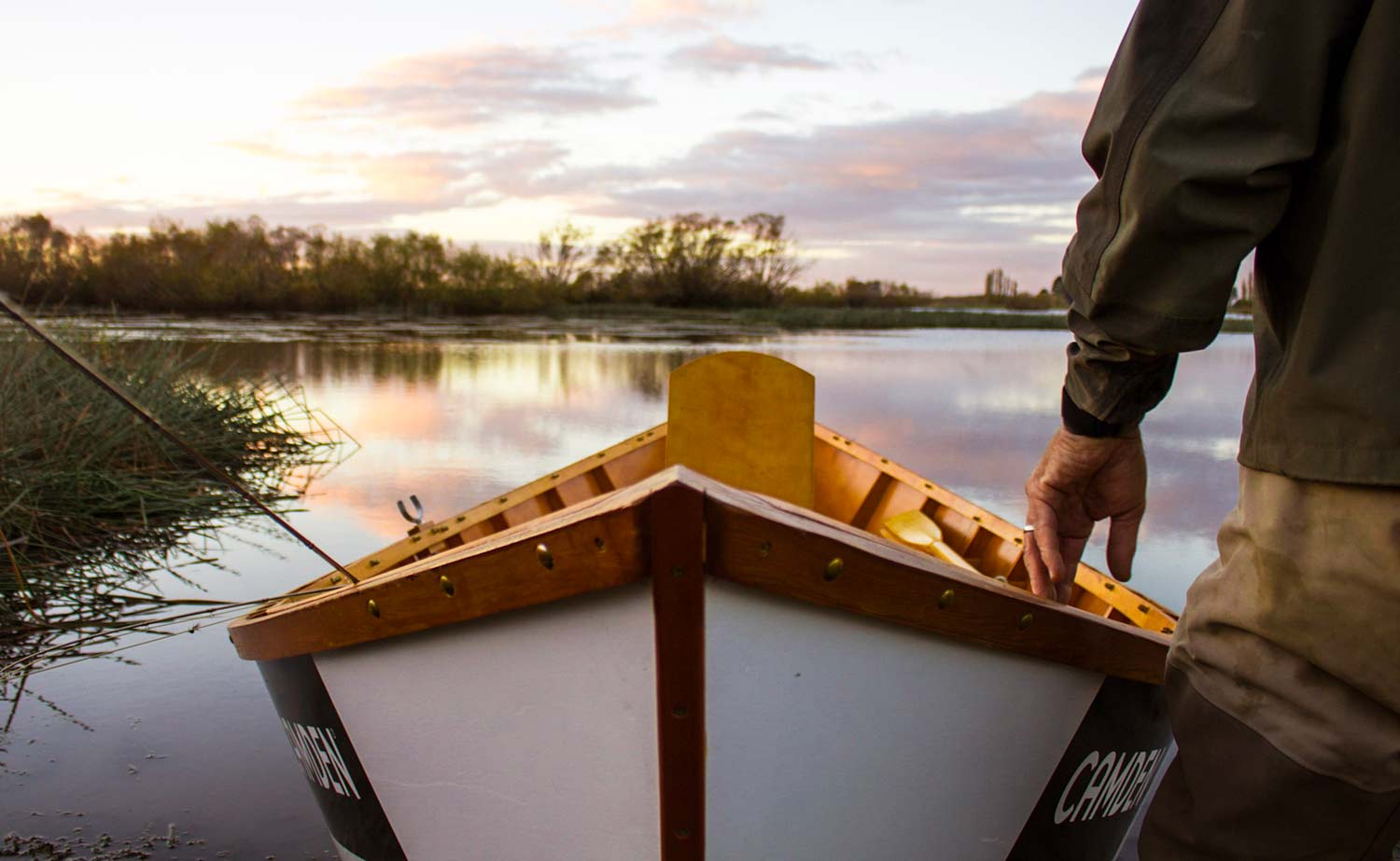
By Marcus Saunders
That gentle morning light seems to push back all those fears that hound our minds at 3am. Glancing sideways out of the ute window, I see vague outlines race by as the human world slowly comes into focus; the radio is silent, and only the occasional rattle of the trailer reminds me that the boat is in tow. Early mornings belong to no one. Fishermen seem to love them more than most, the enveloping quiet, indifference from most wildlife and only the occasional raspy bird call. The put-in at Cressy is quiet, not another soul as you watch the sun creeping closer until finally that ribbon of fire burns across the landscape. The boat slides gently from the cradle, the teflon doing its job as quickly the boat is tugging on the rope. Sometimes it feels a little strange, like a dog pulling on the leash, then final checks and a gentle push, and your other life is left behind. The first dip of the oar as you correct then find your line, followed by the inevitable arse shifting as the rope seat softens and you push to find your sacred position. You swing the bow into the current, one more quick check, and finally it feels right.
Despite the graft, it just feels right. Everything seems to be as it should be, and a little on-the-spot research confirms that these boats were designed for hard labour. I’ve never considered myself an oarsman, but when I sit in a boat that has been shaped by my own hands a different kind of connection seems to exist. It may sound a little fauxmantic, yet it is possibly like any other love in that it helps make us whole. The slow start is comforting, low volume on the chatter as eyes search, those extra few minutes in the seat settle you quickly as mental adjustments are made and reading the water takes on its true meaning, searching casts arc out toward the bank as perception and reality clash. Thankfully, rhythm takes hold as cast after cast seems to be hitting the zone, the first slashy take drags us back as the mad scramble ensues, all that initial organisation goes to shit as the net gets dragged out from under what appears to be a floating fishing store and takeaway food shop. Gently you ease back on the oars as the struggle quickly fades and the net is dipped beneath a pretty little hen with spots that makes you take a second look. It feels good to be on the board early and, after easing her gently back, some quick reorganising shuffles the positions and it’s my turn to cast.
The day rolls with the pace of the river. Continual mends are thrown as you attempt to use the current to your advantage, still no hatch yet enough fish sitting just off the edge that the nymph dropper can still bring some activity. The air temperature has climbed enough that we can now strip down to waders and a tee, we need no reminders of how cold and long winter is, and any chance to lighten up is taken. Along with the warmth come the hatches. All of a sudden the back eddies are filling with lilting mayflies, they lift and fall under the now patchy sky, leaders are lightened and size 16 black spinners are tied on and ginked. We float along until
Read More »Six Tips for Better Bonefish Hook Sets
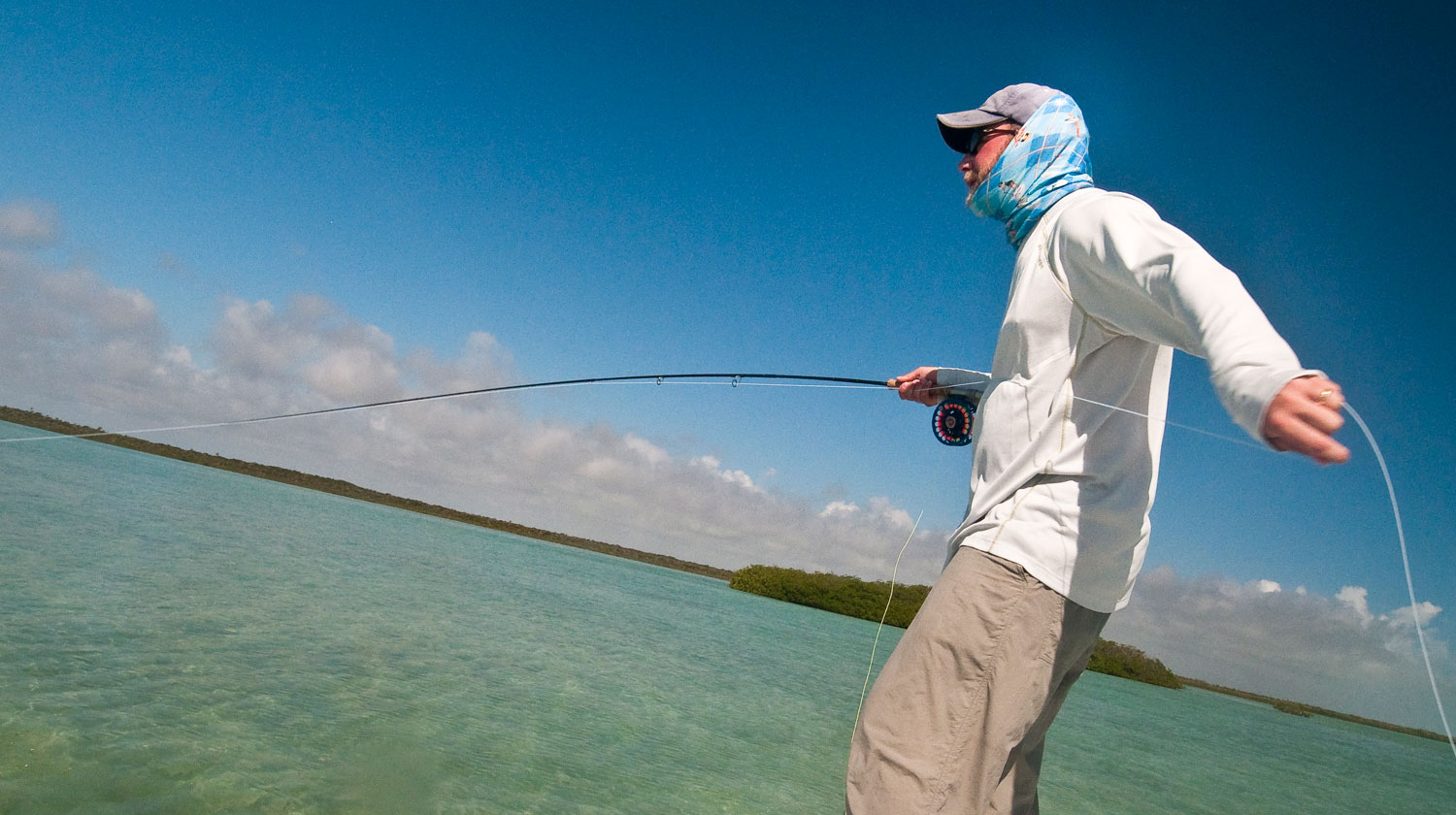
SO YOU’VE FOUND A BONEFISH AND FED IT? DON’T BLOW THE HOOK SET.
The hook set is the decisive moment. The moment when most bonefish are lost or landed. Considering how much effort goes into finding and feeding a fish, it’s wise to have the skills to get a good solid hook set. There are a couple of things that often go wrong but if you know what to expect and what to do when things go wrong, you can make the connection you need.
A Proper Strip Set
A solid hook up starts with a good strip set. The most common mistake that anglers new to saltwater fly fishing make is lifting the rod when setting the hook. This is called a trout set and no matter how hard you trout set it will not give you the penetration you need. Saltwater fish have hard mouths made for eating food that fights back. To get a solid set you have to keep the rod pointing at the fish and set with your line hand.
For a proper strip set on a bonefish, you need the pressure of a raucous hand shake. The kind you might give a good friend you haven’t seen in years. When I teach bonefishing, I like to play the part of the fish and let the students feel the right amount of pressure. I think it makes a big difference, but for now let’s go with a really firm handshake. Strip the line quickly and be prepared to strip long. Move your rod hand laterally, to the outside without changing the angle of the rod as you strip. Once you feel the right amount of pressure, be prepared to let the fish run.
Fighting Muscle Memory
Knowing how to strip set doesn’t matter if you forget to strip set. This is the hardest thing for most new saltwater anglers. Thousands of hours of trout setting muscle memory are devilishly hard to retrain. I teach a foolproof method
